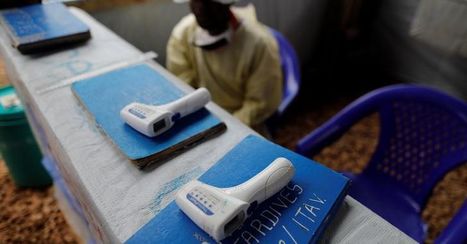Experts have long understood that a new polio vaccine developed to try to minimize the risks associated with the oral polio vaccine made by Albert Sabin might also cause the problem it was created to sidestep. It’s now clear that theoretical risk is a real one. The Global Polio Eradication Initiative announced Thursday that six children in the Democratic Republic of the Congo and one in Burundi have been paralyzed by viruses from the new vaccine, which is referred to as novel oral polio vaccine, or nOPV2. (The “2” signals the vaccine targets type 2 polioviruses.) In addition, five environmental samples collected from Burundi contained the so-called type 2 circulating vaccine-derived polioviruses, or cVDPV2s. “We are disappointed,” said Ananda Bandyopadhyay, deputy director for technology, research, and analytics on the polio team of the Bill and Melinda Gates Foundation, a partner in the polio eradication effort. “Any such outbreak is disappointing.” The Gates Foundation is one of a half-dozen partners in the Global Polio Eradication Initiative. The others include the World Health Organization; UNICEF, the United Nations Children’s Fund; the Centers for Disease Control and Prevention; Gavi, the vaccine alliance; and the service club Rotary International.
Bandyopadhyay and the polio eradication initiative itself were quick to point out that this turn of events was not unexpected. The live polioviruses used in oral vaccines are manipulated to eliminate their ability to paralyze. Children who receive these vaccines shed live viruses in their stools. In settings where sanitation and hygiene are poor, the viruses can move from child to child, effectively indirectly vaccinating children whom vaccination teams haven’t reached — a feature that has made the Sabin vaccines the workhorse of polio eradication. But if the viruses spread long enough, they can regain the ability to paralyze — a problem that led the polio program to stop using type 2 oral vaccine in 2016, in a bold and ultimately failed effort, known as “the switch,” to stop spread of type 2 viruses from the Sabin vaccines. The injectable polio vaccine, designed by Jonas Salk and used in affluent countries like the United States, does not contain live viruses and therefore doesn’t trigger paralysis. But while it prevents paralysis, it cannot stop transmission of polioviruses — wild type or vaccine derived — which makes it less useful in countries where vaccine-derived viruses are spreading. In recent years, the nearly 35-year-old effort to rid the world of polio has managed to drive numbers of infections with wild viruses down to low levels. Last year, only three countries — Pakistan, Afghanistan, and Mozambique — reported 30 cases. So far this year, there has been only one case detected, in a child in Afghanistan. But as the battle against wild viruses has gained ground, use of the oral vaccine has seeded chains of transmission of the vaccine-derived viruses. In 2022, nearly 800 children or young adults in roughly two dozen countries developed paralytic polio after being infected with one of the vaccine viruses from the Sabin vaccines. Among them was an unvaccinated young man in New York State, this country’s first polio case in nearly a decade.
Of the three original strains of polio — types 2 and 3 have been eradicated, only type 1 remains — the portion of the Sabin vaccines targeting type 2 viruses triggers the vast majority of vaccine-derived polio cases. A few years ago, with support from the Gates Foundation, the novel oral vaccine targeting type 2 viruses was developed. It was put into use in mid-March of 2021 — two years ago. Since then 590 million doses of nOPV2 have been administered in 28 countries. The seven cases of paralytic polio, which stem from two chains of vaccine-derived viruses, are far fewer than would likely have occurred if those hundreds of millions of doses had been the Sabin vaccine, Bandyopadhyay said. An analysis from the Gates Foundation’s polio team suggested that there would have been 30 to 40 new chains of type 2 vaccine viruses over that period, rather than two, he said. Other experts agreed it is important to put the finding in context. “I’m not alarmed. It’s a much better tool than we used to have,” said Walter Orenstein, a polio expert at Emory University. “It’s not perfect,” he said of the new oral vaccine. “But given its rarity, it hopefully will be able to do the job. At least not generate lots of these kinds of outbreaks.” Kim Thompson, president of the nonprofit organization Kid Risk and a mathematical modeler who has worked on polio eradication for decades, said this event is only showing the world that what was assumed about the new oral vaccine is in fact true. “This possibility has always been out there in the cards. And really this is just the proof of concept that the nOPV2 can lose the attenuated mutations and behave like other live polioviruses, and particularly do so in populations where [vaccine] coverage is low,” she said. But Thompson is worried that given the low levels of immunity to type 2 polio, even less frequent outbreaks of vaccine-derived viruses will amplify a problem the polio program is struggling to contain. “The reality is that since we have transmission happening in these areas with low coverage and this immunity gap that exists … there’s more room for these viruses to go. That’s part of the challenge here, is to figure out what to do to stop type 2,” she said.
Helen Branswell
Senior Writer, Infectious Diseases
Helen Branswell covers issues broadly related to infectious diseases, including outbreaks, preparedness, research, and vaccine development. Follow her on Mastodon and Post News.



 Your new post is loading...
Your new post is loading...










